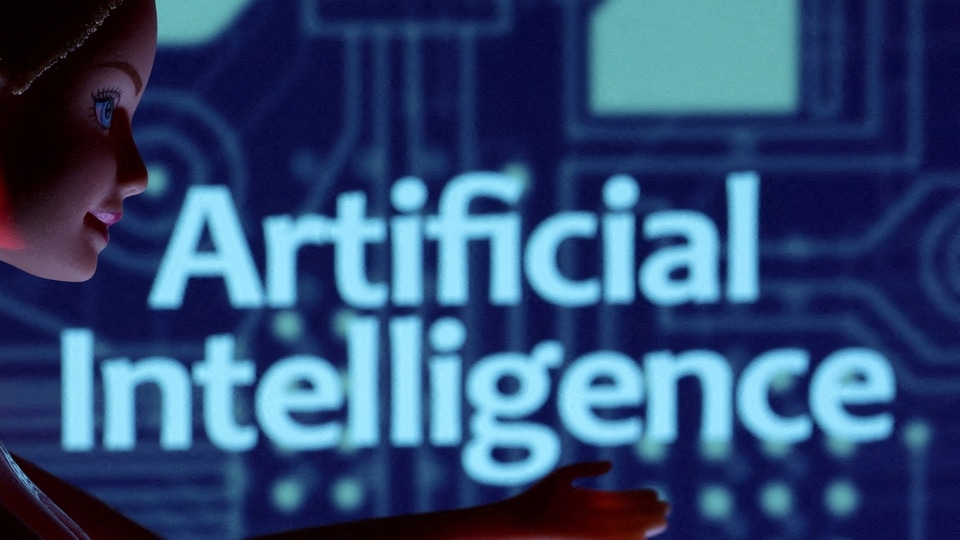The future of disaster planning: How AI & ML models could protect communities from natural disasters
AI and machine learning can revolutionize disaster management by predicting and mitigating the effects of natural disasters.

While artificial intelligence (AI) is great fun to generate text and produce art, there are some serious issues that AI and machine learning (ML) can solve. With natural disasters becoming increasingly devastating and unpredictable, life is getting more uncertain in some areas of the world. Disaster management is a sector where the integration of AI and ML models can revolutionize the way we prepare for, respond to, and mitigate the effects of catastrophic events, while we use the new tools to protect communities and save lives.
In recent years, the changing landscape of natural disasters has been hard to keep up with. According to the WMO's 2020 State of Climate Services report, globally, one in three people is not covered sufficiently by an early warning system. Climate change, urbanization, and population growth have amplified the vulnerability of communities, rendering traditional disaster planning methodologies insufficient in many cases.
While the concerns for climate change continue to baffle, the world's organizations and institutions are taking notice and reaching out to technology to assist, where AI and ML have emerged as powerful allies.
“We are all exposed to natural hazards, and this will worsen in the future,” Jürg Luterbacher, Director of Science and Innovation of the World Meteorological Organization (WMO), said at a recent AI for Good online seminar. “We need to act upon them accordingly.”
WMO, the International Telecommunication Union (ITU), and the United Nations Environment Programme (UNEP), are exploring the potential of AI to strengthen disaster mitigation and formed an expert Focus Group on AI for Natural Disaster Management to support global efforts to integrate AI in disaster-management systems.
If only we could foresee a disaster's arrival. Recently, technology has helped model natural disasters, leading to successful tools for response to weather events. A case in point is Cyclone Phailin in eastern India in 2013, when precise numerical model guidance prevented a tragedy of the kind that followed a similar storm 15 years earlier.
AI and ML are strengthening this even further.
Predictive Insights for Proactive Measures
AI and ML models are particularly adept at processing vast amounts of data and identifying patterns that might elude human analysis. This capability is a game-changer in disaster planning. By analyzing historical data, weather patterns, seismic activities, and a range of other factors, these models can predict the likelihood and intensity of various disasters.
For instance, Microsoft has tied up with SEEDS (Sustainable Environment and Ecological Development Society) and Gramener, a design-led data science company, to work on a project to create an advanced machine learning-based model to plan and respond more effectively to natural disasters, such as floods, heatwaves, earthquakes, hurricanes and more. The model provides users with risk scores down to every house in the impacted area, allowing first-responders to warn the high-risk houses earlier, help them safeguard their property, and evacuate.
Sundeep Reddy Mallu, Head of ESG and Analytics at Gramener, explains how AI can help with disaster risk monitoring. “Natural disasters leave tons of data in their path, in addition to destruction. AI and ML models can mine historical data and identify various patterns that can assist in future decision-making processes,” he says.
AI models are good at performing a risk assessment of vast regions by combining geospatial intelligence with on-the-ground information.
“Such risk assessment assists in early warning systems that can minimize the damage from natural disasters. Less damage means faster recovery post-disaster and less expensive,” he adds.
Another example is the Stanford Earthquake Detecting System (STEDS), which is a ML model that detects earthquakes often ignored by traditional methods.
Predictive models can provide early warnings for tsunamis, allowing coastal communities precious hours to evacuate. Similarly, AI-driven wildfire prediction systems can analyze terrain, weather conditions, and vegetation to forecast areas at the highest risk of ignition, enabling firefighting resources to be strategically deployed.
Enhancing Emergency Response
The power of AI and ML is such that they can improve emergency response efforts with real-time insights and optimized resource allocation. For example, AI-equipped drones can be used to survey disaster-stricken areas, creating detailed maps that help responders identify hazards and locate survivors. Also, ML algorithms can process incoming data from various sources, such as social media and emergency calls, to provide a comprehensive view of a chaotic event.
Moreover, AI-powered chatbots and virtual assistants can help broadcast critical information to affected populations, guiding on evacuation routes, shelter locations, and medical resources. While this ensures that accurate and up-to-date information is reaching people, it also reduces the burden on human responders.
Google's flood forecasting system, which India and Bangladesh have deployed to predict the severity and location of floods, uses a combination of computational hydrology and ML. The system simulates how water will flow across the land, even keeping in view factors like terrain and historical flood data. The system then generates maps and alerts that provide local communities and authorities time to prepare and respond.
According to Google, their flood alerts have reached millions of people, providing them with potentially life-saving information. In India, where over 20% of global flood-related fatalities occur, this system has been instrumental in enhancing the country's disaster response capabilities.
Mitigation and Resilience
While preparing for disasters is crucial, efforts to mitigate their impact and enhance community resilience are equally vital. AI and ML models contribute to these aspects as well. By simulating various disaster scenarios, urban planners can optimize infrastructure designs to withstand the forces of nature. This might involve developing flood-resistant buildings, earthquake-resistant bridges, or wildfire-resistant landscaping strategies.
ML algorithms can also analyze historical data to identify areas that are susceptible to repetitive damage, guiding decisions about land use and zoning regulations. Additionally, these technologies can aid in creating more accurate risk assessment models for insurance companies and financial institutions, leading to better pricing and coverage options for at-risk communities.
In this regard, IBM's PAIRS (Physical Analytics Integrated Data Repository and Services) Geoscope leverages AI to analyze satellite images and assess disaster damage, which helps form successful disaster response efforts and recovery planning.
This system uses AI to analyze large and complex geospatial-temporal data sets and ML algorithms to analyze satellite images to identify changes caused by natural disasters such as floods, wildfires, or earthquakes. For instance, it can detect changes in vegetation cover, water bodies, and infrastructure, providing a clear picture of the extent of the damage.
A Collaborative Future
While AI and ML can work wonders in disaster planning, we must ensure that we use it collaboratively, bringing together experts from fields like climatology, engineering, data science, and social science. Governments, NGOs, tech companies, and local communities must form partnerships that prioritize the safety and well-being of all citizens.
United Nations (UN) AI Advisor, Neil Sahota, who published the best seller, “Own the AI Revolution”, says, “AI has emerged as a crucial ally in disaster prevention, acting as a vigilant guardian that continuously observes a wide range of elements, from subtle shifts in weather patterns to changes in geological formations, to anticipate potential disasters.”
While natural disasters become more frequent and severe, AI and ML models can prove to be our best bet. We can leverage the power of data-driven insights, predictive capabilities, and real-time decision support, to save lives in the face of nature's fury.
By Navanwita Sachdev, The Tech Panda
Catch all the Latest Tech News, Mobile News, Laptop News, Gaming news, Wearables News , How To News, also keep up with us on Whatsapp channel,Twitter, Facebook, Google News, and Instagram. For our latest videos, subscribe to our YouTube channel.


























